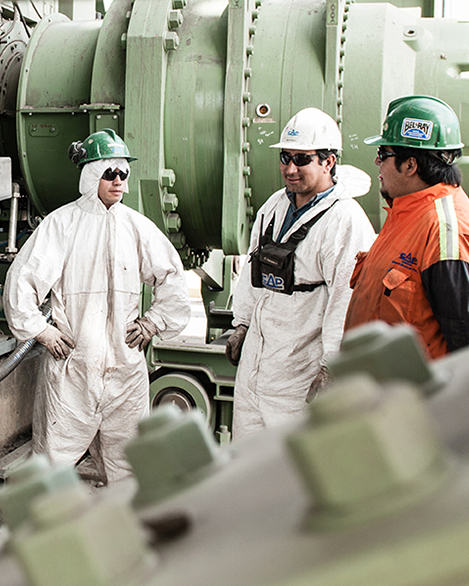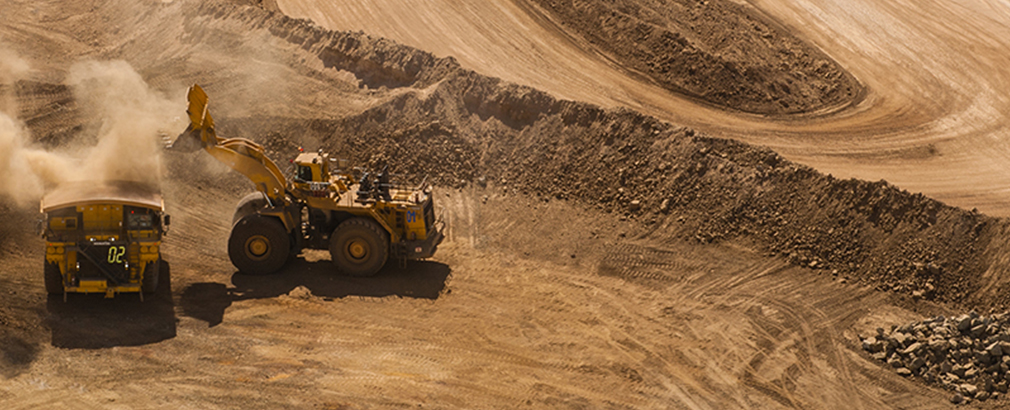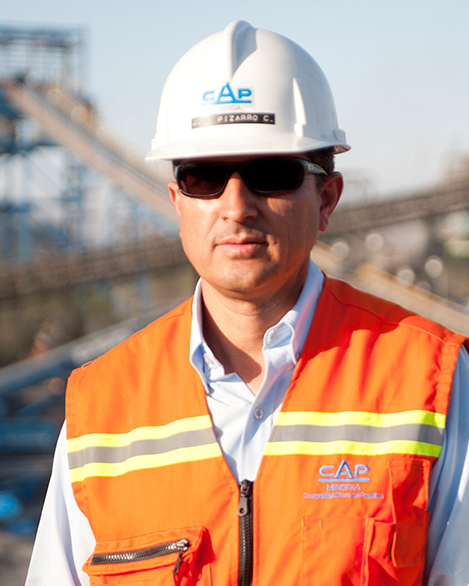Safety means taking care of life. At CAP no production goal or operational emergency has priority over it.


Considering that the industrial processes to produce material goods and provide certain services entail exposure to numerous occupational risk factors (which can be physical, chemical, biological, ergonomic and psycho-social), Chile enacted its Law N° 16.744 establishing standards regarding labor accidents and professional diseases. Likewise, different executive orders (decrees) govern the prevention of labor risks and define Risk Prevention Instruments (IPR, in its Spanish acronym) depending on the number of workers of a company. In the case of large (over 100 employees) companies, the following IPR are required: (a) The duty to report or the right to know; (b) Internal safety and hygiene regulations; (c) To have a Joint Committee on Health and Safety; and, (d) To have a Risk Prevention Department.
For the companies that work with contractors, there are other legal requirements with respect to the management and prevention of risks at work sites. The law requires the existence of Special Regulations for Contractors; a Joint Work Site Committee; a Work Site Risk Prevention Department; and, a Safety and Health Management System in the work area (SG-SST).
Safety is a corporate priority that is handled with a system approach that puts the emphasis on the preventive management of accidents. Safety management rests on three strategic pillars: a culture of safety; a visible leadership; and, incident management.
The company has occupational health & safety management systems (OHSAS 18001) in three of its four operations, which are certified by an external company validated to that effect. CAP Acero and Procesamiento1 are 100% certified; while CAP Mineria2 has already certified 62% of its operations. On the other hand, Puerto Las Losas is certified under the port-specific ISPS Code.
Thanks to the strengthening of a preventive culture of safety, CAP Mineria, through the Visible Leadership and Behavioral Improvement program, received two national recognitions for its safety management: one of them was awarded to Minas Los Colorados and other to the Joint Committee on Hygiene and Safety of El Romeral, on grounds of its historical continuity.
During 2016, Cap Acero strengthened its safety preventive culture through preventive safety campaigns and the strengthening of the Incident Reporting System, awarding prizes to the best safety reports. In parallel with the foregoing, the work carried out with observers of the BAPP Method was intensified.
In the case of Cintac, there have been significant improvements in its workers’ safety performance; not so, however, among its contractors. Consequently, the emphasis was placed in strengthening the management of contractor companies and, in turn, in updating the occupational health & safety procedures of those companies.
1Include only Cintac and TASA, not Tupemesa.
2 CAP Minería is certified in all its facilities except in Cerro Negro Norte
| 2016 Goal | Minería | Acero | Procesamiento3 | Infraestructura 4 | |||||||||
|---|---|---|---|---|---|---|---|---|---|---|---|---|---|
| 2014 | 2015 | 2016 | 2014 | 2015 | 2016 | 2014 | 2015 | 2016 | 2014 | 2015 | 2016 | ||
| N° Fatalities | 0 | 0 | 0 | 0 | 0 | 0 | 0 | 0 | 0 | 0 | n.i. | 0 | 0 |
| N° of Very serious accidents | 0 | 1 | 0 | 0 | 0 | 0 | 0 | 1 | 1 | 1 | n.i. | 0 | 0 |
| Frequency rate | 2.3 | 1.5 | 2.3 | 2.0 | 4.4 | 3.1 | 3.1 | 6.4 | 10.5 | 13.1 | n.i. | 0 | 3.3 |
| Gravity rate | 97 | 66 | 25 | 37 | 93 | 143 | 83 | 344 | 272 | 511 | n.i. | 0 | 28 |
Frequency rate = Accidents with time lost per million person/hours worked. It includes employees and contractors.
Severity rate = Days lost per million hours worked. It includes charges for serious accidents. In the case of fatalities, they are punished with a loss of 6,000 days.
Very serious accident = Accidents causing permanent disability or a work site stoppage with a loss of over 30 days.
n/i = No information.
3It includes Cintac, Tupemesa and Tasa.
4It includes Aguas CAP and Puerto Las Losas.
All Group companies have risk management systems, which are expressed in safety programs and plans to protect against emergencies and/or natural disasters. These include training their workers, setting up emergency brigades, being appropriately equipped as well as maintaining a continuous coordination with safety institutions and entities external to the companies.
During 2016, the CAP companies participated in earthquake and tsunami drills (for operations along coastal areas), carried out by national authorities. Emergency drills were carried out in the operations of the mining company to assess the processes of the emergency and contingency plans, continuing to provide training on first aid, cardiopulmonary resuscitation and on immobilizing and transferring of patients; all of it aimed at the paramedical personnel of each work site. Also, incipient fire control training was made.
Cintac, on the other hand, resumed activities with the emergency brigade groups at the Maipu and Lonquen plants. The infrastructure area carried out emergency drills, mainly of the port type and in case of natural catastrophes on coastal areas.
Year 2016 without emergency operations.

A priority issue for CAP is for its workers to work in a healthy workplace. It is so established in the company’s Corporate Policy on Sustainability, Occupational Health & Safety Management.
The highest occupational disease risks of Group companies have to with muscle/skeletal problems and hearing loss caused by noise in places of work. There is no risk of silicosis in the mining company.
As a preventive measure occupational medical examinations are carried out to all workers.
December 2016, there has been no official diagnosis of occupational diseases of any kind.